
These panel meters are designed especially to be super easy to set up, saving you valuable time and money. Plus, they are precise, stable, cost-effective, and available from stock. You and your staff will be delighted with the clear, high contrast display, which has adjustable brightness to suit all viewing environments.
The INT4-C is our most popular 1/8 DIN panel meter which accepts standard pulse signals from NPN, PNP, contact closure, 24VDC and 5VDC devices and encoders.
They make perfect commercial sense, even when compared to cheaper meters because they take so little time to set up and will continue working perfectly for years and years even in harsh industrial environments.
They can be set to display 2,3,4,5 or 6 digits and have a wide range of plug-in options to give you useful control, recording and communications functions.
They accept most industrial sensors, so you can use one familiar range of products for many applications. All are RoHS compliant.
The 1/8 DIN format INT4 is a drop-in replacement for the old INT2, but has a clearer setup system and higher performance signal processing. It looks the same, connects the same but works far better.
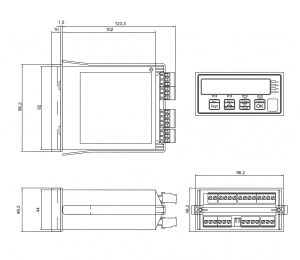
| Weight | N/A |
|---|---|
| Dimensions | N/A |
| Digit Height | 14mm |
| Input Signal | NPN, PNP, Contact Closure, 24V logic, 5V logic, Up to 50kHz |
| Analogue Output | -10 to +10V, 4-20mA, 0-10V |
| Alarm Outputs | 2 x solid state relays (DSS), 4 x solid state relays (QSS), 2 x mechanical relays (SPCO), 2 x SPST mechanical relays, 4 x SPST mechanical relays |
| Data Interface | RS232, Modbus RTU, RS422/RS485 + Modbus ASCII |
| Number of Digits | 6 |
| Supply Voltage | 11-30V DC, 95-265V AC |
| Power Burden | 10VA maximum |
| Bezel Size | 96mm wide x 48mm high |
| Panel Cutout | 92mm wide x 45mm high |
| Depth Behind Panel | 125mm |
| Front Panel Sealing | IP65 standard, IP67 with optional SPC4 cover |
| Operating Temperature | 0C to +50 Deg. C |
| Filter - Analogue Output | +/-10V, 0-10V, 4-20mA |
We know you’re excited to receive your order, and we’re working hard to keep parcels moving as quickly as possible whilst also ensuring the safety of our factory and warehouse staff.
Please note, that delivery times are confirmed at the time of order and are estimated, not guaranteed. If you would like to check on the availability and lead time of a particular product, please contact Customer Services at [email protected].
No matter where you are, the size of your order, or how fast you need it – we have a delivery option for you!
For current delivery prices please click on the link below. For items not listed in the price list, please request a quote and we will endeavour to provide a price for you as quickly as possible.
https://www.london-electronics.com/pricelists/delivery-within-mainland-uk/
The method of shipment will be at our discretion unless otherwise specified on our acknowledgment. We will however take all reasonable steps to comply with your specific shipping requests
At this time we do not accept international payments through our shop. However, no matter where you are in the world we can supply our products to you. Please request a quote through the online form, and a member of our sales team will be in contact with you to discuss further.
Price depends on the delivery location, weight, and value of your order.
You are more than welcome to use your own courier to collect your order if preferred. Alternatively, you can come and see us to collect the order in person.
For either of these options simply select ‘Collect in Person’ or ‘Collect via own Courier’ at the checkout.
It’s safe to say that we’re living through some changeable times right now, so if you’d like to stay up to date with the latest news on how we’re responding, sign up to our newsletter on the link below.
These panel meters are designed especially to be super easy to set up, saving you valuable time and money. Plus, they are precise, stable, cost-effective, and available from stock. You and your staff will be delighted with the clear, high contrast display, which has adjustable brightness to suit all viewing environments.
The INT4-C is our most popular 1/8 DIN panel meter which accepts standard pulse signals from NPN, PNP, contact closure, 24VDC and 5VDC devices and encoders.
They make perfect commercial sense, even when compared to cheaper meters because they take so little time to set up and will continue working perfectly for years and years even in harsh industrial environments.
They can be set to display 2,3,4,5 or 6 digits and have a wide range of plug-in options to give you useful control, recording and communications functions.
They accept most industrial sensors, so you can use one familiar range of products for many applications. All are RoHS compliant.
The 1/8 DIN format INT4 is a drop-in replacement for the old INT2, but has a clearer setup system and higher performance signal processing. It looks the same, connects the same but works far better.

| Weight | N/A |
|---|---|
| Dimensions | N/A |
| Digit Height | 14mm |
| Input Signal | NPN, PNP, Contact Closure, 24V logic, 5V logic, Up to 50kHz |
| Analogue Output | -10 to +10V, 4-20mA, 0-10V |
| Alarm Outputs | 2 x solid state relays (DSS), 4 x solid state relays (QSS), 2 x mechanical relays (SPCO), 2 x SPST mechanical relays, 4 x SPST mechanical relays |
| Data Interface | RS232, Modbus RTU, RS422/RS485 + Modbus ASCII |
| Number of Digits | 6 |
| Supply Voltage | 11-30V DC, 95-265V AC |
| Power Burden | 10VA maximum |
| Bezel Size | 96mm wide x 48mm high |
| Panel Cutout | 92mm wide x 45mm high |
| Depth Behind Panel | 125mm |
| Front Panel Sealing | IP65 standard, IP67 with optional SPC4 cover |
| Operating Temperature | 0C to +50 Deg. C |
| Filter - Analogue Output | +/-10V, 0-10V, 4-20mA |
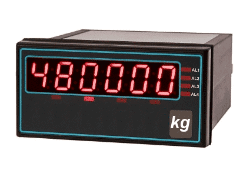
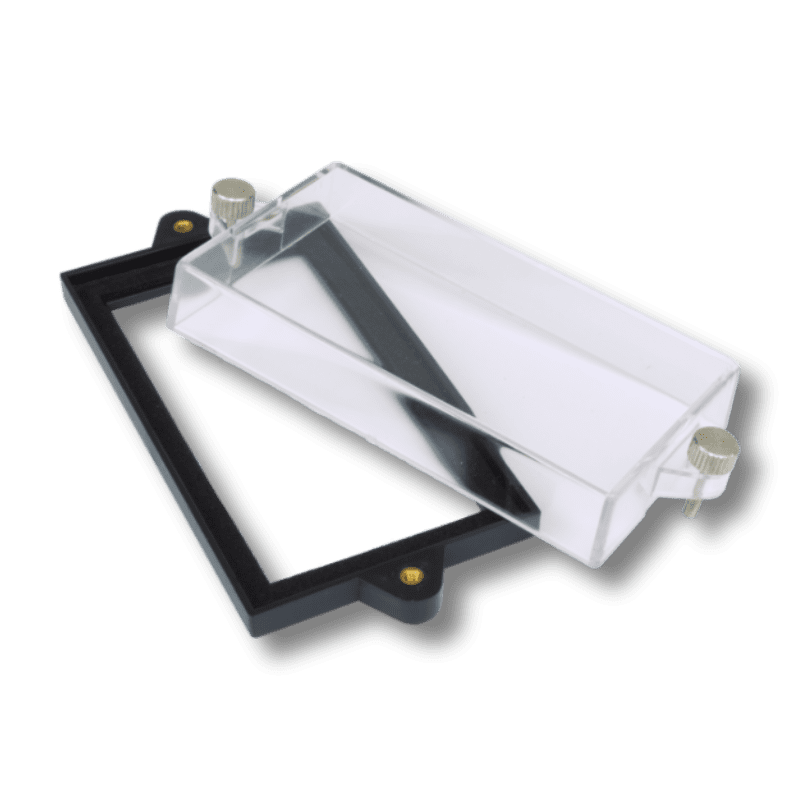
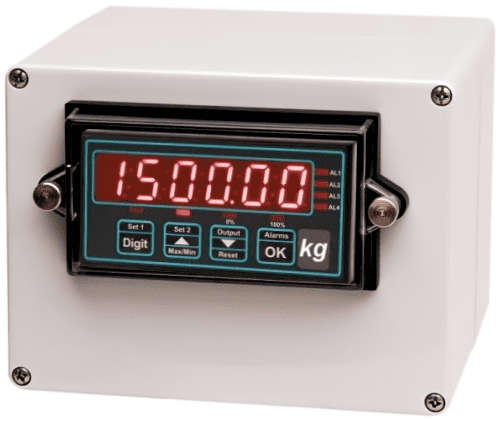
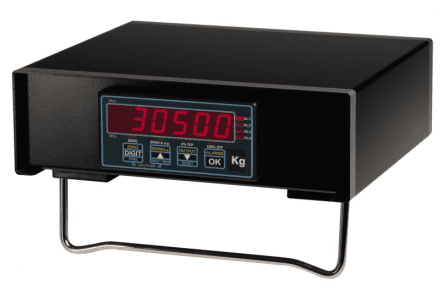

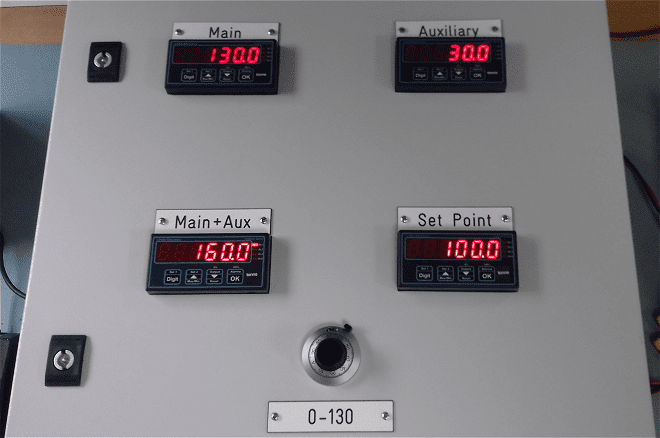
A crane overload monitoring and alarm system using INT4 digital panel meters.
A crane overload monitoring and alarm system using INT4 digital panel meters.
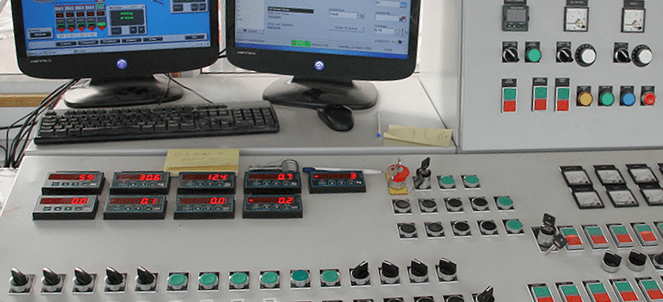
A group of INT4 digital panel meters in a batching control panel.
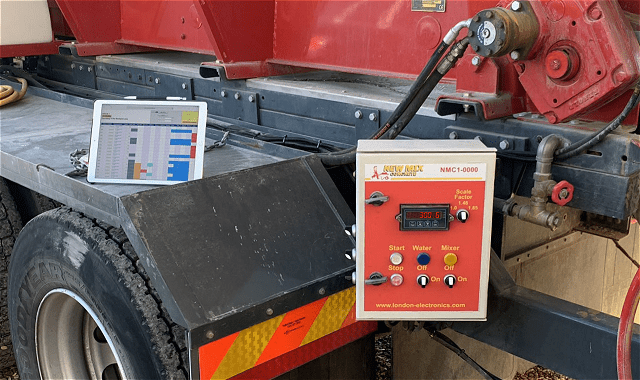
An INT4-C counter mounted on a concrete batching vehicle.
As it is subjected to road spray from the wheels of the truck, it is protected by our IP67 cover. It also has daylight viewing LEDs so that it can be clearly read in sunlight.
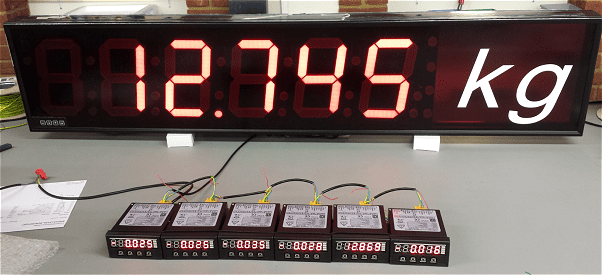
A FUSION large digit display with 200mm high digits is summating the loads measured by 6 x INT4-L load cell panel meters.
Summation is digital with data collected over a 3-wire RS485 data link.
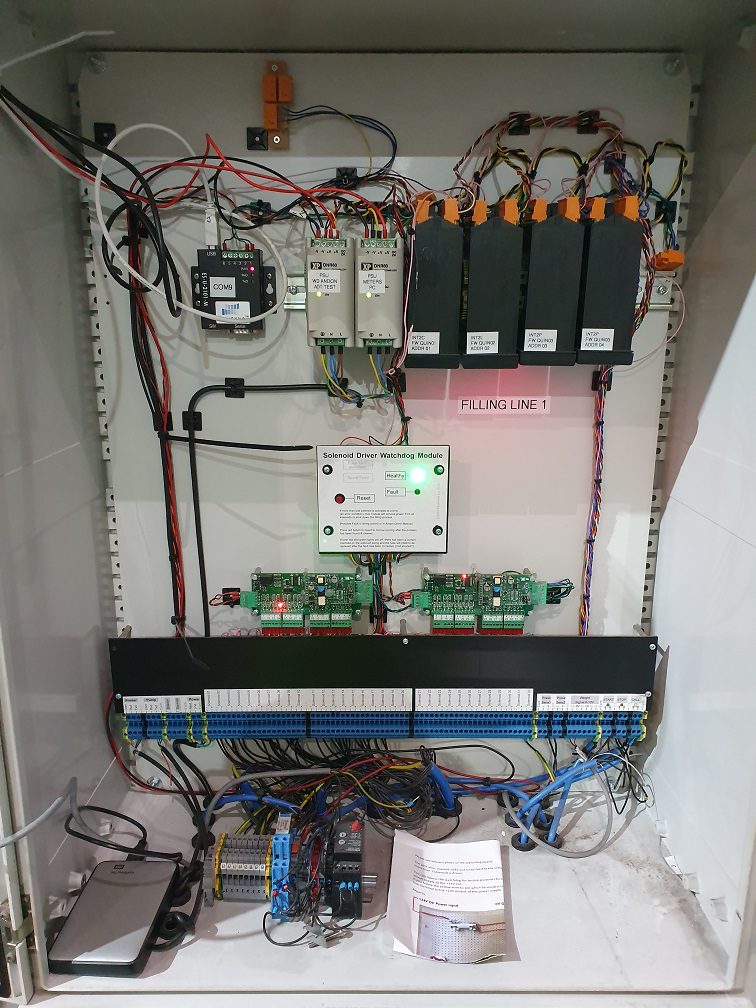
8 x INT4 digital panel meters DIN rail mounted inside a control cabinet for a filling line.